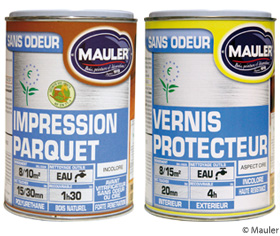Investing in eco-design is profitable!, Novethic, 16/07/10 Beatrice Heraud
If many companies are thinking today about designing their products in a more environmentally friendly way, few of them finally take the plunge. However, eco-design is profitable.
In the field of eco-design, the examples of Steelcase or Xerox are well known and are seen as models. But are these companies that have successfully converted their production to sustainable fashion an exception on the question of profitability? Until now and even when the consideration of the environment in the design of products dates back more than 30 years, there have been few in-depth studies on the economic performance of the approach. It is therefore to compensate for this lack that the Pole of eco-design and life cycle management of the chamber of commerce and industry of Saint Etienne / Montbrisson and the institute of product development of Montreal have allied for carries out a study with the evocative name: “Eco-design; what economic returns for the company? "
"Many companies still see sustainable development or eco-design as an expense, one more pitfall that increases the costs of product development and they are skeptical about the profitability of such an approach," notes Guy Belletete, director general of the IDP. "When we went to see companies to offer them to carry out a pre-diagnosis, they told us:" It's very nice, but how much does it pay? ". We needed tangible figures… ”confirms Samuel Mayer, director of the eco-design pole of the CCI of Saint-Etienne.
Savings… and new markets
It's done. The authors have indeed examined an eco-designed product and launched for over a year in 30 companies distributed fairly between Quebec and France. They represent several sectors of activity and 12 out of 30 are based on eco-design. Result: “for a very clear majority (27 cases out of 30), it can be said that eco-designed products or services have generated a profit margin at least as great as if they had been designed in a traditional way. The savings achieved are mainly in the raw materials used (13 out of 17) but in some cases (6 out of 17) there is also a reduction in energy consumption in the process. On the other hand, for a minority (5 cases out of 30), the purchase of a less polluting input has led to an increase in variable costs, such as this company manufacturing bioplastic camping utensils which has to pay more for natural resin than plastic classic.
But the economic interest also and especially resides in the conquest of new markets, estimates Jacques Berger, the director of Eurotab, an SME which manufactures tablets in the world of detergents, disinfection but also of food (coffee ). “At the start, we launched into eco-design in an opportunistic way, admits the DG, because the tablets already had a lot of environmental benefits. Then we went further and further, using green chemistry and reducing packaging. But it was out of the question to do eco-design if it was not economically profitable. Very quickly, Eurotab will see that it has made the right choice. Thanks to its approach, the SME in fact won an unsuspected market in Canada, or following the eutrophication of the great lakes, phosphates were banned in laundry products. This will be the saying: "we are going to review the entire life cycle of our products. And we even see further than eco-design; we are rather on eco-innovation ”, underlines Jacques Berger.
And beyond the contribution of new markets, the study also highlights new benefits in the creativity and organization of the business, where the launch of an eco-design approach is often the prelude to d 'other innovations and a greater mobilization of employees.
Proven profitability, generalized eco-design?
Faced with this observation, once the first step has been taken, will companies go so far as to generalize the process? Most of them are, according to the study. However, it should be noted that this is largely based on companies that make eco-design their raison d'être. Thus, for Jacques Berger, “generalization does not seem possible in the immediate future because many markets are not yet ready. For the moment our eco-designed products are only bought in the western markets… ”And already, at the start, the director of Eurotab admits having had some difficulties in convincing his customers. "We must not believe that it is enough to do eco-design for it to sell," he says.
However, there is a purely economic logic in the multiplication of eco-designed products; "The cost decreases according to the number of projects", affirms Samuel Mayer. Because if eco-design is profitable, it still has a cost, in both financial and human terms. So, for example, one of the companies spent more than $ 100 before finding the formula that allowed continuous production without bogging down the equipment, while another had to set up a marketing department to be able to produce the necessary promotional material for highlight the characteristics of the product ... In view of the difficulty of finding suitable suppliers, we can also say that there is every interest in capitalizing on the process ... And if the investment is substantial, it can be amortized very quickly: a company which had thus invested nearly $ 000 in R&D thus recovered double the amount thanks to savings in production costs of $ 400 per year!
However, on the ground, companies are still cautious. The observation made by Samuel Mayer is eloquent: since the launch of the pre-diagnostics on eco-design, the CCI of Etienne has carried out nearly 400 but "we are in a logic of funnel, the factor of transition to the "the act is about 1 for 5 or 6", he specifies. The main obstacle? "Resistance to change," he said immediately. Because “we move from a logic of sale, to a logic of use. This calls into question the whole conception of marketing based on obsolescence and hyper-consumption. A real upheaval of perspective, therefore.


